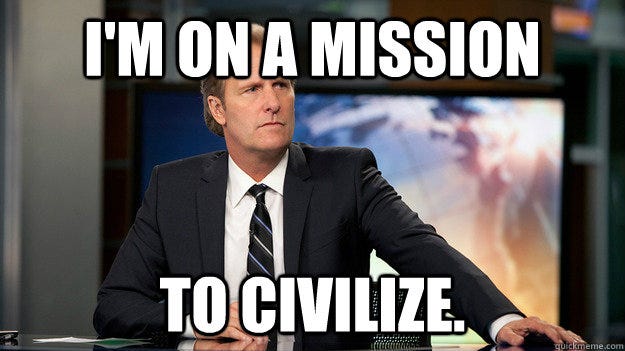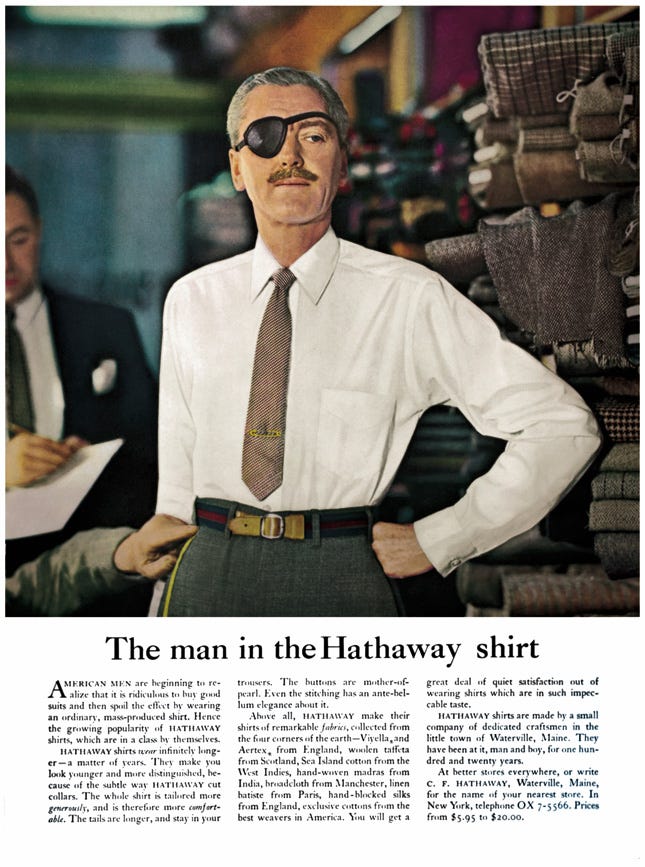How to hear the unspoken stories your customers tell themselves.
Talent agencies are a strange world.
They have Ivy League lawyers working in the mailroom. Employees burst out in temper tantrums and no one blinks an eye. Name dropping is an acceptable form of conveying social status and garnering respect.
It’s a strange, strange place.
I know because in the summer of 2007, I interned at one.
It wasn’t really my jam. The parties, name-dropping, celebrity — not for me. But I learned a lot about the entertainment business.
Later that year, I returned to college in Atlanta and landed my dream internship at CNN.
Finally. To be around journalists. Where they didn’t care about status and power and parties and “entertainment” — just integrity. Telling the truth.

Yea, my naivety bubble burst pretty quickly after my first day on the job
After interning in LA for a summer, it was pretty clear to me CNN was in the entertainment business.
The puzzling part was that CNN employees believed they worked in journalism.
Three hours of waiting for some unknown dignitary to get off a plane was important, they said. That’s what the people want to know, they said. We have a responsibility to the public! They said.
This is news! They said.
They believed, like we all do, in the story they told themselves.
What “story”?
The truth is that both of the companies where I was working were in entertainment. They make money because you watch movies and TV.
But they don’t view themselves as being in the same industry. One believes it’s in advertising/sales, the other believes it’s in journalism/media.
Because of the story.
“Story” and “storytelling” are a buzzwords we love to abuse in marketing.

What does that even mean?!
When we say “story” today, we mean the things you tell yourself in the confines of your own mind.
The things you think are true about the world, but they’re….not…exactly?
Like this:
- “Smart people get good grades.”
- “You’re not really an adult unless you’re married and you have a house.”
- “Professional people wear suits.”
These are stories we believe. They aren’t lies, but they’re also not “true.”
Some very smart people get very bad grades. You can be an adult without a house. Professional people can wear hoodies.
These stories exist in our minds and define our worldview.
They’re difficult to identify because we don’t recognize them as stories. We recognize them simply as, “how the world works.”
The truth is irrelevant
This man doesn’t exist.

This was one of the first print ads to use “story appeal” to sell a product in 1951. The story is not about an eye-patch or a shirt. It’s about the type of man who buys a Hathaway shirt.
It doesn’t matter if it’s true.
It matters that your customer believes the story.
No, not the story of the fictional Man in the Hathaway Shirt. The other story.
The story of who your customer becomes when he puts on a Hathaway shirt. That story.
It’s the same story with every brand. Who your customer becomes when she puts on Nike sneakers, eats Kind Bars, or uses your software.
The truth is irrelevant.
It’s the story that matters.
And to know the story you need to tell your customer, you have to identify the story she’s telling herself. You have to know how to read her mind.
How to read minds
The data on what your customer believes will never show up in your market research. It won’t show up in surveys. It won’t show up in interviews.
It exists between the lines. In the silences.
To read your customer’s mind, you have to have different ears. (Yes, ears.)
You have to listen to what she doesn’t say.
Listen to what she does. Listen to her behavior. Listen for her assumptions.
Listen for the stories she’s told herself about the way the world works.
It’s our job to connect the dots between what she says and what she does. It’s our job to listen for the story.
She says: “I try to cook 3x a week. I just don’t have time.”
Untrained ear hears: “She’s busy. She really wants to be healthier. We need to emphasize convenience and low-cal in our marketing!”
Trained ears hear: “She wants to cook because she thinks she should, but honestly she doesn’t give AF. It’s not a priority for her. She just feels guilty about how much she orders take out. She’d be happier if she allowed herself to not feel like shit about how much she orders out.”
Knowing that story leads your team to craft a brand message about “reducing the guilt” instead of “being healthier.” The difference between those two stories is millions of dollars.
What the best marketers know
The story your customer tells herself determines where she spends her time, attention, and money.
The best marketers know that the only thing that matters is what your customer believes.
The stories she believes about herself and about the world determine her behavior.
The best marketing works when the brand story and customer stories match up.
For example:
If your customer’s story is this: “I’m centrist, but I lean left because that’s just reasonable.”
Her brand is CNN.
CNN’s story is: We report the news. We tell people the things they need to know. We are serious journalists, but we lean left because that’s just reasonable.
If her story is, “I’m a right wing conservative and the liberal media is deceiving all of you and brainwashing you. I don’t trust anyone.” Her brand is Fox.
Fox’s story is: We are the whistleblowers on the evil leftist conspiracy. We’re doing you a service. We are the only ones you can trust.
If her story is, “I’m exhausted and it’s been a long day and right now I don’t give a rats ass what’s going on in Syria.”
Her brand is Bravo.
Bravo’s story is: “Pour yourself a glass of wine and come hang out with us. Don’t take yourself so seriously. We won’t judge you. You’re safe here. Compared to our reality stars, your life is drama free baby girl.”

The best marketers know that the brand story and the customer story must be aligned.
Otherwise, the marketing won’t work.
–
This article first appeared in www.thinkgrowth.org
Seeking to build and grow your brand using the force of consumer insight, strategic foresight, creative disruption and technology prowess? Talk to us at +9714 3867728 or mail: info@groupisd.com or visit www.groupisd.com




